Good wood for great sport
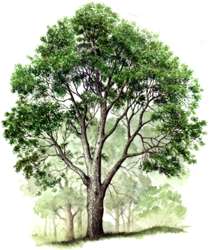
Most people probably know white ash quite well. They’ve hefted it, grasped it in their hands, and worked with it for hours.
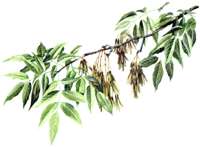
Anyone who has ever dug a hole with a spade, gathered leaves with a rake, or chopped weeds with a hoe has touched white ash. The tough, resilient wood leads hickory for handles on nonstriking tools.
Although white ash indeed classifies as utilitarian, it bests all woods in a sporting role. Wooden baseball bats (still the mainstay in pro leagues) have always been made of white ash. Before man-made fibers, it was also the wood of choice for tennis rackets and skis. You’ll also find white ash as hockey sticks, polo mallets, oars and paddles, and playground equipment.
Chairmakers also prefer white ash due to its bending ease. And its workability, plus good looks, make white ash one of the top commercial woods in the furniture and cabinet industries.
Wood identification
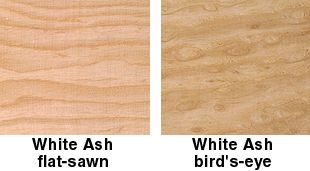
White ash (Fraxinus americana) grows from the East to the Midwest. Green ash and blue ash—with somewhat weaker wood—share the same range, and commercially, they’re harvested and marketed together.
Preferring the well-drained loam soil found in river valleys, white ash can grow to 120′ tall and a diameter of 6′ with nearly half the trunk height clear of branches. You won’t find it in pure stands, though. Instead, the tree likes a mix of neighbors—hardwoods in the South, conifers in the North.
The name « ash » may originally have come from the gray color of the tree’s flat-ridged bark that’s cross-hatched with diamond shapes. As does walnut, white ash produces leaves 8″ to 12″ long that are made up of five to nine lance-shaped leaflets, each about 5″ long. Near the leaves hang the fruit of last year’s growth—clusters of tan paddle-shaped wings with seed cases.
White ash differs in color from black ash (often called brown ash), its cousin in the market. White ash looks lighter—although it’s actually tan, not white. And even flat-sawn white ash can display bird’s-eye, fiddle-back, and quilt-pattern figure.
The wood of white ash nearly matches hickory’s rating in strength, stiffness, and hardness. Yet, at 41 pounds per cubic foot, cream-colored white ash is lighter and easier to work. Although somewhat course-textured, white ash generally has straight and even grain.
Uses in woodworking
You can use white ash for any woodworking project that you would red oak: chairs, tables, desks, and cabinets. Although durable to exposure from the elements, it won’t, however, weather as well as white oak in outdoor projects.
Carvers and woodturners view white ash the same as red oak. Its hardness and coarse grain make it difficult to work.
Availability
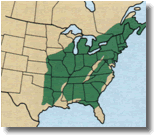
From board to board, flat-sawn white ash can have some real wild grain. If that’s not the look you like, you’ll want to handpick for more subtle stuff. On the other hand, you can combine boards with figure, contrasting grain, and « defects » such as flecks from burrowing insect larvae (long deceased!), for eye-catching pieces.
Once you have your white ash, remember that it is hard, so expect the wood to have a moderate blunting effect on your hand or power tools. For best results, plan on sharpening your tools before you begin, and then again during the project. With power tools, you may want to tackle white ash with carbide-tipped cutters. Otherwise, the following suggestions will help you work this wood.
Machining methods
- Nearly as hard and as dense as sugar maple, white ash burns easily if you use dull or dirty blades and cutting edges. And the burns won’t easily sand off.
- Avoid burning when ripping the resistant wood by choosing a rip-profile blade with no more than 28 teeth. Then, don’t force feed it.
- Be sure to feed white ash to the jointer so that the knives’ rotation follows the grain direction, or the wood will chip. Feed figured wood slowly and at a slight angle.
- Avoid burning and chipping with your router by taking shallow passes on the wood. In end-grain and all cross-grain passes, use a backing board on the exit side to eliminate chipping.
- Always use pilot holes for nails and scews, and drill them with brad-point bits to eliminate wander.
- White ash’s hardness means that you can’t skip grits when sanding or the wood scratches, and they’re hard to get out. It can, though, be sanded glass-smooth.
- Although the wood readily accepts all types of adhesive, it is slow to absorb, so a glue with a longer open time (white glue) performs better.
- Unlike maple, white ash won’t give you any problem in staining, and filling the grain for smoothness isn’t necessary.
Carving comments
Carvers haven’t traditionally been drawn to white ash. Maple-like in hardness, but failing to take fine detail, the wood probably seems more trouble than it’s worth. But if you want to carve white ash, treat it like red oak:
- Do rough-in work with a deeper bevel (25°-30°), and then grind to a shallower bevel (15°-20°) for details.
- Don’t attempt long slices with the grain because the wood will splinter. Instead, take shorter strokes and use stop cuts.
Turning tricks
Again, pretend you’ve encountered a really hard piece of red oak, and turn accordingly.
- Use only the very sharpest tools.
- Counter splintering by taking shallow cuts.
SHOP-TESTED TECHNIQUES THAT ALWAYS WORK
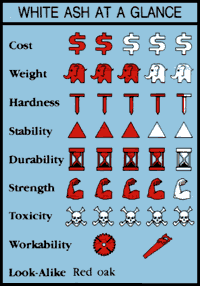
Any exceptions—and tips pertaining to this issue’s featured wood species—appear under headings elsewhere on this page.
- For stability in use, always work wood with a maximum moisture content of 8 percent.
- Feed straight-grained wood into planer knives at a 90° angle. To avoid tearing, feed wood with figured or twisted grain at a slight angle (about 15°), and take shallow cuts of about 1/32″.
- For clean cuts, rip with a rip-profile blade that has 24-32 teeth. Smooth cross-cutting requires at least a 40-tooth blade.
- Avoid drilling with twist drills. They tend to wander and cause breakout. Use a backing board under the workpiece.
- Drill pilot holes for screws.
- Rout with sharp, preferably carbide-tipped, bits and take shallow passes to avoid burning.
- Carving hardwoods generally means shallow gouge bevels—15° to 20°—and shallow cuts.

